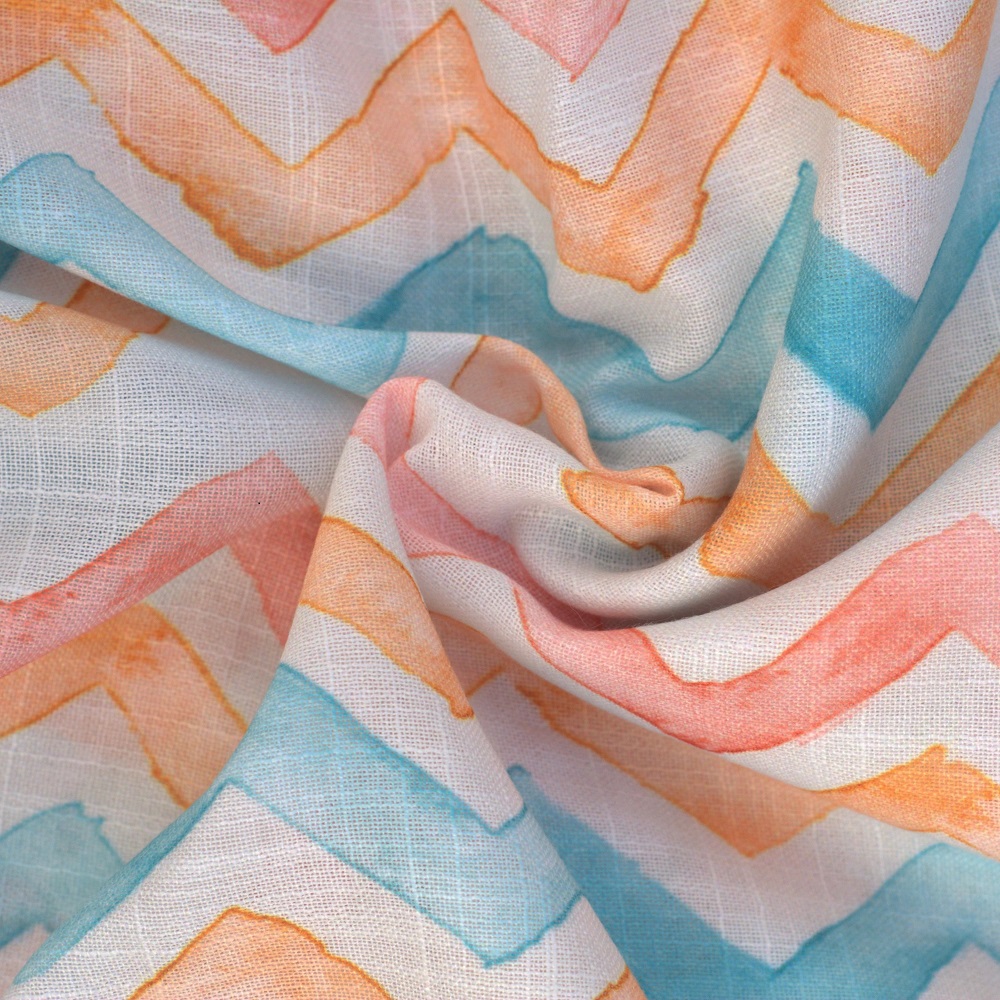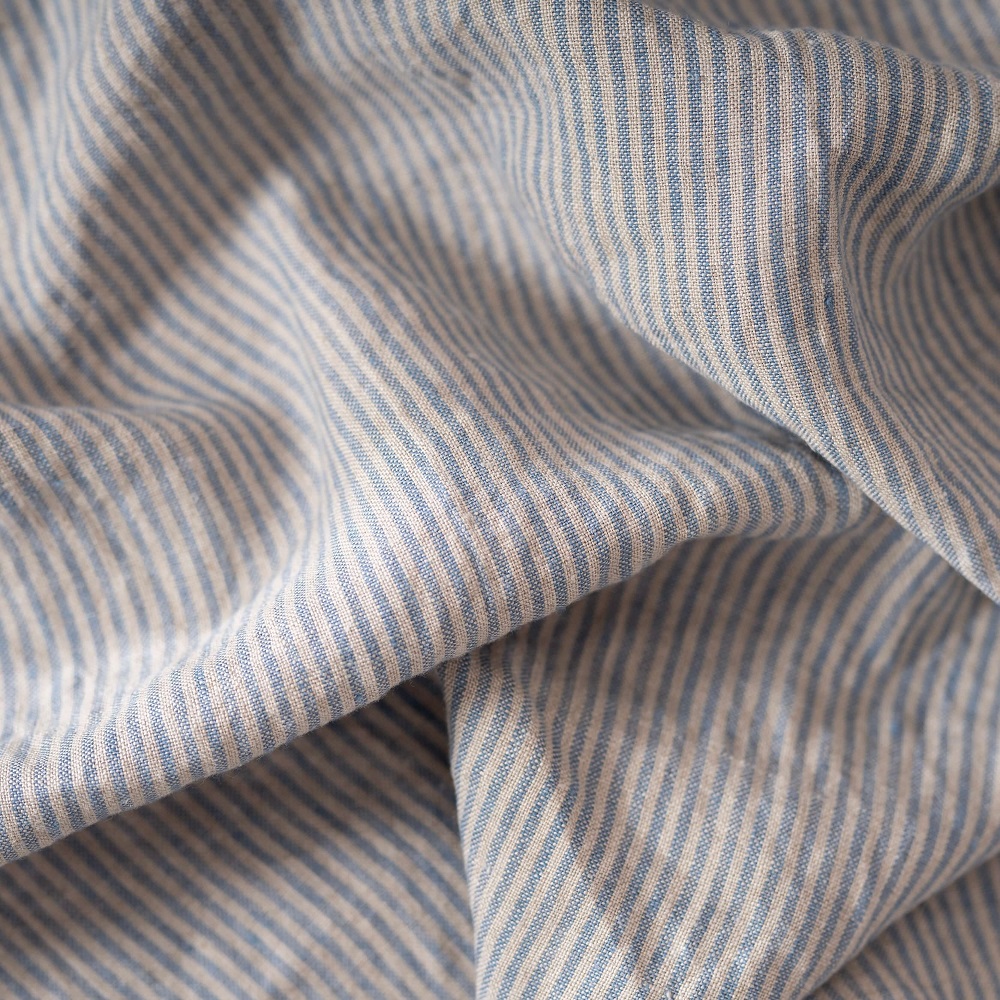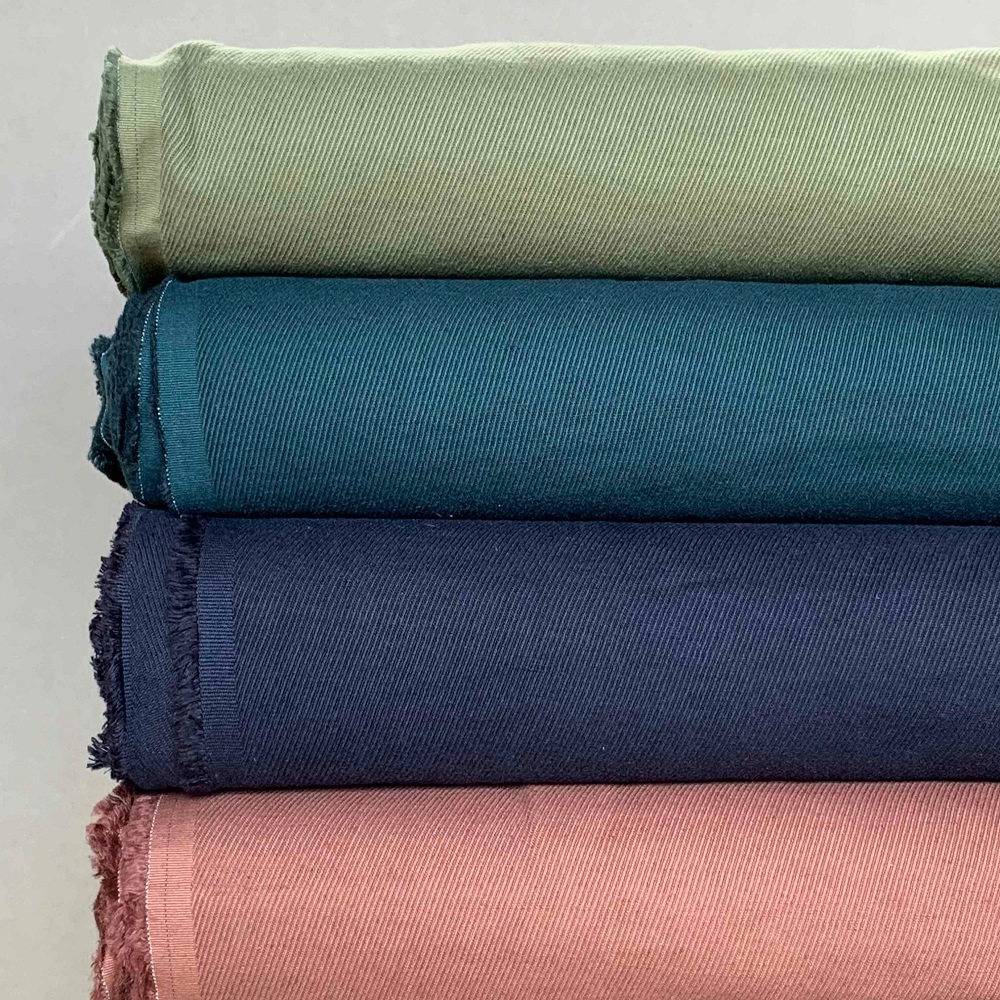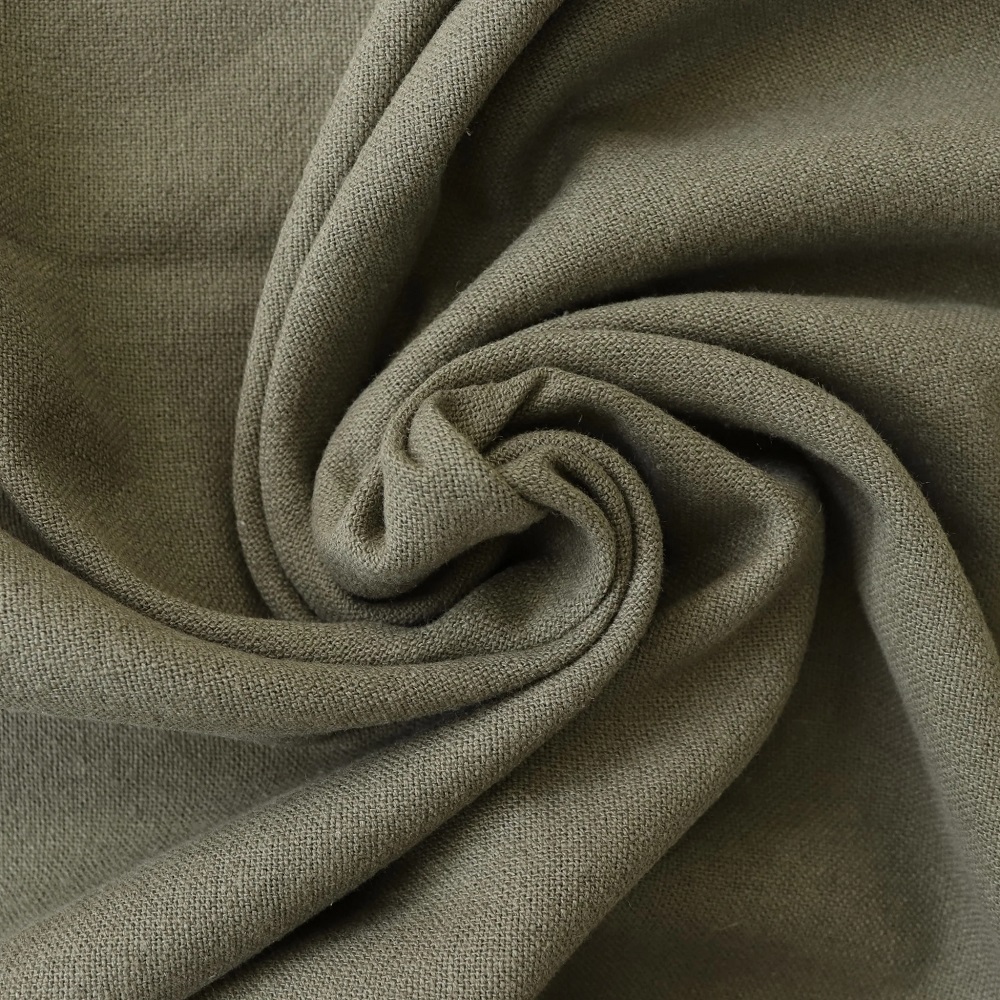The Basics of Cotton Linen Fabric
Understanding the essentials of cotton linen fabric helps us appreciate its value in sustainable fashion.
What is Cotton Linen?
Cotton linen is a blend that combines the natural fibers of cotton and linen. This fabric is created through the interweaving of these two materials. The result is a textile that leverages cotton’s softness with the robustness of linen. It’s a popular choice for eco-conscious consumers.
The Unique Characteristics of Cotton Linen Blend
The cotton linen blend stands out due to its unique properties. It is breathable and moisture-wicking, making it comfortable in warmer climates. This fabric has a distinct texture that is both visually appealing and tactile. Its strength is superior to that of pure cotton, which means it lasts longer. Not only does cotton linen have thermal-regulating capabilities, but it also has less tendency to cling to the skin. These features make the blend highly sought after in the realm of sustainable textiles.
Environmental Impact of Cotton Linen Fabric
Benefits of Eco-Friendly Fabrics
Eco-friendly fabrics, like cotton linen, provide major environmental benefits. They require less water and energy to produce compared to synthetic materials. Cotton linen fabric uses natural fibers, which reduces the reliance on fossil fuels. Plus, since these fibers are biodegradable, they won’t clog up landfills after their lifespan. The minimal use of chemicals in cultivating cotton and linen limits soil and water pollution. This makes cotton linen a responsible choice for the planet.
Cotton Linen Fabric and Sustainability
Cotton linen fabric supports sustainability in various ways. Firstly, it’s made from renewable resources. Cotton plants and flax (for linen) regrow seasonally. Cotton linen also promotes less waste. Its durability means garments last longer, reducing the need for frequent replacements. Importantly, this fabric often comes from farms that prioritize crop rotation and natural growth cycles. These practices maintain soil health and biodiversity. By opting for cotton linen, you contribute to a sustainable future in fashion.

Advantages of Cotton Linen in Fashion
The integration of cotton linen fabric into fashion isn’t just a trend; it’s a reflection of consumers’ growing commitment to sustainability and quality. The unique blend of cotton and linen fibers provides distinct advantages that make it a favorite among designers and shoppers alike.
Durability and Comfort
Cotton linen fabric boasts an impressive combination of durability and comfort. Its strong linen fibers contribute to a longer lifespan for clothing, which aligns with sustainable fashion values like reducing waste and promoting slow fashion. Clothes made from this fabric can withstand multiple washes and wear, meaning they retain their shape and appeal over time. Comfort is key in any garment, and the softness of cotton in this blend ensures that clothing is not just long-lasting, but also incredibly comfortable to wear. Its breathable nature allows air to circulate, which keeps the wearer cool in hot conditions.
Versatility in Clothing Design
Versatility is another cornerstone of cotton linen fabric’s success in fashion. Designers love working with this material because it accommodates various styles and purposes. From elegant dresses to casual shirts, cotton linen seamlessly adapts to different fashion needs. Its texture adds a touch of sophistication to any piece, while its ease of dyeing means it comes in a wide range of colors. This versatility also renders it ideal for both formal and informal wear, making it a well-rounded choice for any wardrobe. Choosing cotton linen is opting for sustainable style that does not compromise on functionality or aesthetic appeal.
Comparison to Other Sustainable Fabrics
As we continue to explore the benefits of cotton linen fabric, it’s helpful to compare it to other materials in the sustainability arena.
Cotton Linen vs. Bamboo Fabric
Cotton linen and bamboo fabrics both offer eco-friendly benefits, but they differ in their properties and production methods. Bamboo fabric is known for its softness and has a silky feel, unlike the textured appearance of cotton linen. Bamboo grows rapidly and absorbs greenhouse gases, making it a sustainable crop. However, the process of turning bamboo into fabric often involves harsh chemicals, which can impact the environment. In contrast, cotton linen relies on natural fibers that require fewer chemicals during production, aligning it closely with environmental sustainability goals.
Cotton Linen vs. Hemp Fabric
Hemp fabric is another sustainable contender, praised for its durability and the minimal water it requires to grow. Hemp, like cotton linen, boasts great tensile strength, meaning it’s a very robust material. However, while hemp is highly resistant to pests and doesn’t need much pesticide, its rough texture can be a drawback for some fashion applications. Cotton linen strikes a balance between durability and comfort, as it’s softer than hemp and still maintains excellent strength. Both materials decompose naturally, but cotton linen’s blend may offer a more versatile appeal in the fashion world due to its combination of linen’s strength and cotton’s softness.

Production and Sourcing of Cotton Linen
Understanding how cotton linen fabric is produced and ethically sourced is key for consumers who value sustainability.
How is Cotton Linen Fabric Made?
Cotton linen production begins with harvesting natural fibers from cotton plants and flax plants. Workers spin these fibers to create yarn. This yarn is then woven to craft the cotton linen fabric. The process relies on age-old techniques but can incorporate modern methods to enhance sustainability.
Ethical Sourcing for Cotton Linen
When it comes to sourcing, ethical practices are crucial. This involves choosing farms that use organic methods and avoiding those that rely on child labor or unfair wages. Ethical sourcing ensures the fabric is produced responsibly, considering the well-being of workers and the environment. Brands and consumers are now more than ever, looking for transparency in the supply chain to support sustainable and fair trade practices.
Caring for Cotton Linen Garments
Taking good care of cotton linen garments can extend their life and keep them looking fresh.
Best Practices for Maintenance
Caring for cotton linen fabric is straightforward but requires attention. Wash these garments in lukewarm or cold water to prevent shrinking. Use a gentle cycle on your washing machine. Mild detergents work best to maintain the fabric’s integrity. It is good to avoid bleach, as it can weaken the fibers. After washing, hang the clothes to dry or tumble dry on a low setting. Ironing is optional, depending on the desired look. Steam ironing while damp can smooth out wrinkles and keep your cotton linen garments crisp.
Tips for Prolonging Your Clothing’s Life
To prolong the life of your cotton linen clothes, there are few steps to keep in mind. First, avoid overloading your washing machine; this prevents excessive wrinkling and twisting. Store garments in a cool, dry place to prevent mildew and fading. Folding or hanging them neatly prevents deep creasing. Whenever possible, rotate your wardrobe to allow cotton linen pieces to ‘rest’ between wears. Mending any small tears promptly can also prevent major damage over time. By following these tips, your cotton linen garments can look great for years.

Cotton Linen Fabric in the Market
As sustainability gains momentum, cotton linen fabric is emerging as a stand-out player in the market. Its presence reflects a shift towards more eco-conscious clothing choices among consumers. In an industry often criticized for its environmental impact, cotton linen offers a softer footprint and a hardy alternative to traditional materials.
Trends in Cotton Linen Apparel
Cotton linen apparel is increasingly trendy for its classic aesthetic and eco-friendly credentials. Consumers now seek comfort with conscience, making cotton linen a go-to fabric for designers. Brands leverage its natural texture and versatility to create diverse styles, from breezy summer wear to cozy layered outfits for cooler seasons. Additionally, the fabric’s ability to blend with various dyes makes cotton linen collections vibrant and appealing. Its popularity is seen in the rise of cotton linen in mainstream boutiques and high-fashion runways alike.
The Future of Sustainable Fabrics
The future looks bright for cotton linen as it leads the way in sustainable fabrics. Innovations in textile technology may further enhance its environmental benefits, from organic farming practices to low-impact manufacturing processes. As consumer demand for transparency and ethics grows, cotton linen stands poised as a fabric that embodies these values. Its scalability also indicates that it could become a staple in wardrobes worldwide, fostering a new era where fashion and sustainability coexist harmoniously.
